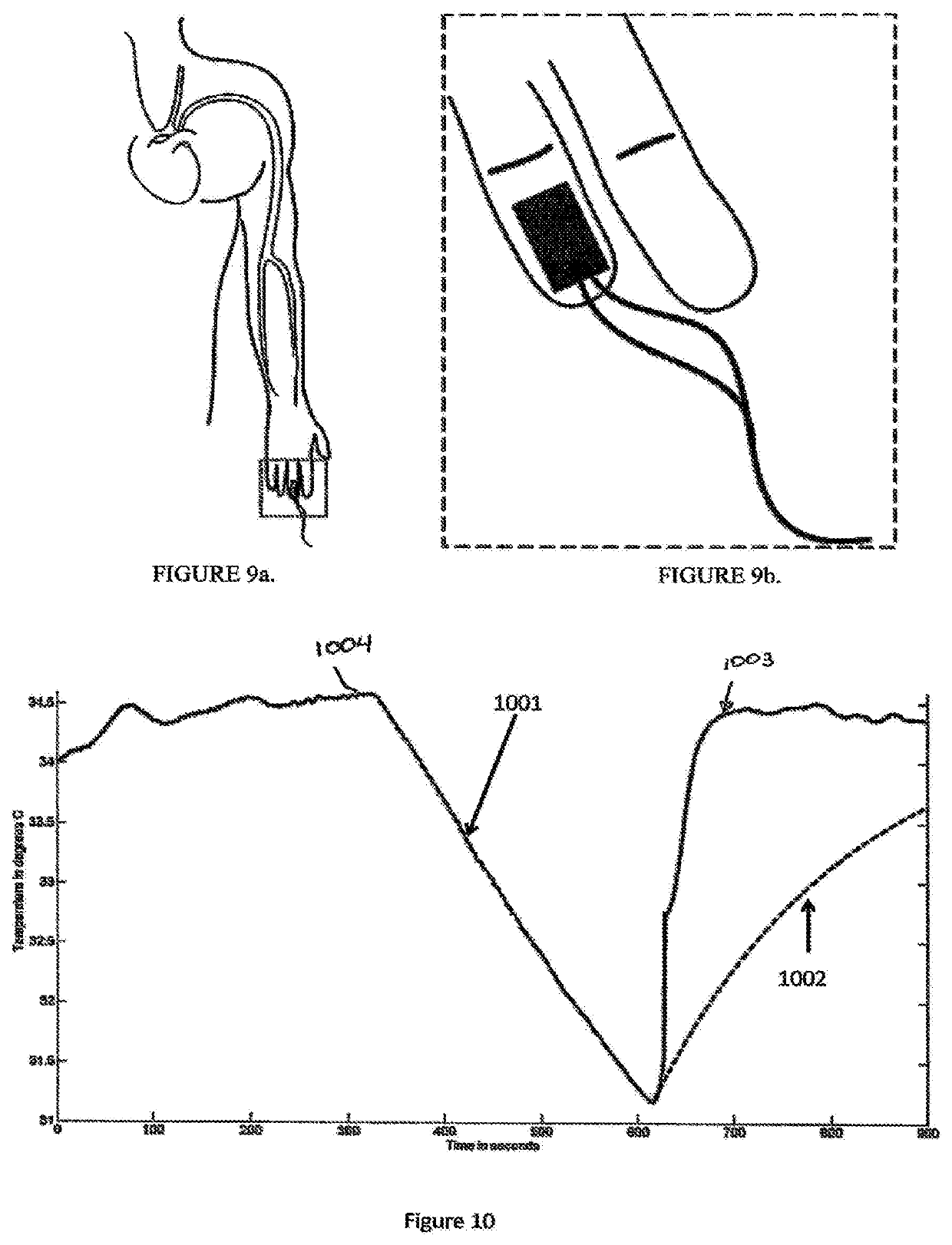Methods and apparatus for assessing vascular health
a technology for assessing vascular health and patients, applied in the field of assessing vascular health of patients, can solve the problems of subject preparation, variability of test results due to environmental conditions, etc., and achieve the effect of maintaining and controlling the suprasystolic pressure in the subject's limb and minimal discomfor
- Summary
- Abstract
- Description
- Claims
- Application Information
AI Technical Summary
Benefits of technology
Problems solved by technology
Method used
Image
Examples
Embodiment Construction
[0068]This disclosure relates to improving the Digital Thermal Monitoring, or DTM, method of assessing the vascular function of an individual.
[0069]Digital Thermal Monitoring (DTM): Certain of the present inventors have developed novel methods and apparatus to determine the vascular reactivity based on a measured response of the vasculature to reactive hyperemia utilizing continuous skin monitoring of inherent temperature on a digit distal (downstream) to an occluded arterial flow. By inherent temperature it is meant the unmodified temperature of the skin as opposed to measurement of the dissipation of induced temperature. This principal and technique has been termed Digital Thermal Monitoring (DTM). See commonly assigned WO 05 / 18516 and U.S. Pat. No. 8,551,008, the disclosures of which are incorporated herein by reference in their entirety.
[0070]It is well known that tissue temperature is a direct result of blood perfusion, but other parameters also contribute. These parameters can...
PUM
 Login to View More
Login to View More Abstract
Description
Claims
Application Information
 Login to View More
Login to View More - R&D
- Intellectual Property
- Life Sciences
- Materials
- Tech Scout
- Unparalleled Data Quality
- Higher Quality Content
- 60% Fewer Hallucinations
Browse by: Latest US Patents, China's latest patents, Technical Efficacy Thesaurus, Application Domain, Technology Topic, Popular Technical Reports.
© 2025 PatSnap. All rights reserved.Legal|Privacy policy|Modern Slavery Act Transparency Statement|Sitemap|About US| Contact US: help@patsnap.com



